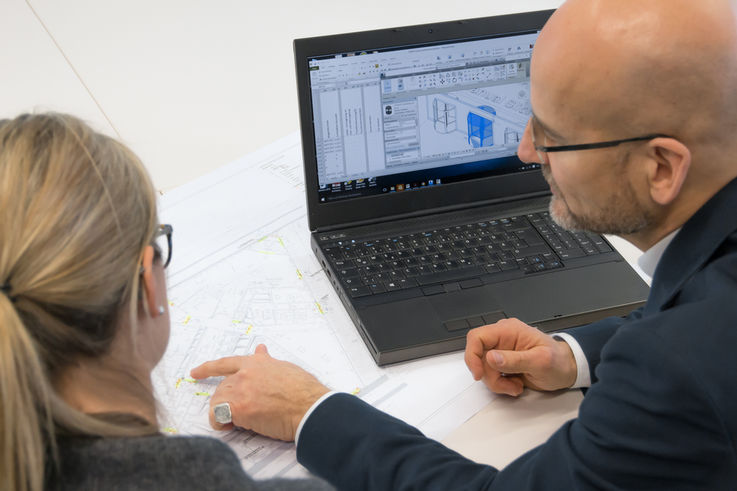Integral building planning with our BIM specialists saves time and money
BIM is a major digital topic in the construction industry. In the future, this method will make building planning, construction and operation more efficient and will save resources. This is the goal of BIM. Günther Weizenhöfer, team leader architects consultance explains the contribution GEZE can make to integral building planning.

GEZE team leader architects consultance Dipl.-Ing. Günther Weizenhöfer
Mr. Weizenhöfer, in your opinion – what are the advantages of Building Information Modeling (BIM)?
Unfortunately, sometimes BIM is still used as a synonym for 3D CAD software that allows viewers to experience and enter structural models during planning. But BIM isn’t a software, it’s a method. And its goal is to facilitate collaborative work and partnership on digital building models. BIM makes it easier to exchange data and allows for collision testing between work packages early on. This means, for example, that you can tell earlier if construction components don’t match up. If a wall is fire resistant, for instance, but the door to be installed in it isn’t.
When will BIM be used in building planning?
When you work with the BIM method, you establish certain approaches and processes in the early phase of the project. These are typically defined in the employer’s information requirement (EIR) and a BIM execution plan (BEP). In many cases, however, the BIM execution plan is only coordinated after the architect and the experts involved in planning are commissioned. And discussion is often necessary.
How can GEZE support the BIM process?
We are door planning specialists. We can handle CAD, we have BIM coordinators in house, and we understand a lot about construction scheduling and the life cycle of a building. This allows GEZE to serve as a partner and support everyone involved in the project with its expertise – from brainstorming to planning, implementation and operations to removal or reconstruction. We help create BIM processing plans and help with the requirements necessary for door objects for proper door planning. This expertise, which we contribute to a partnership, can save lots of time and therefore money.
Save money and time with BIM?
Yes, because BIM works with digitised objects of construction components. In addition to graphic preparation, this also includes required information like descriptions, construction engineering and building planning properties. For example, you can add information to a virtual door, indicating that it is fire resistant or burglar-resistant, you can indicate what material it is made from, whether it has a locking system or a drive. And you can do quite a lot with that information: create door lists, design room books or generate texts for an invitation for tenders, or even complete simulations, for instance of evacuation scenarios. You can pull all of this information very quickly from the central building model.
Architecture, different uses of the building, flows of personnel, safety, fire protection and escape route concepts make the door subsection a highly complex planning task – can objects reflect this complexity?
To create a BIM model, architects and planners can actually use the generic construction elements in common CAD software systems. In many countries, of course, an invitation for tenders has to be conducted in a neutral manner for public building projects. Using generic objects from CAD systems fulfils this neutrality requirement. The disadvantage is that they often don’t offer all required equipment features and variations.
Door planning with BIM is all about using the right information in the right phase!
Dipl.-Ing. Günther Weizenhöfer, team leader architects consultance at GEZEOur configurable GEZE BIM objects are useful here. These are door objects with all the necessary components, as well as some unspecified attributes. A door requires around 150 pieces of information to plan it correctly. It requires a combination of many different pieces of information that have to be sorted if you don’t want to make a mistake. The difficulty for planners is not adding too much information to objects in an early phase. This could cause problems in a later phase of planning or if there are changes. That means planners need the right information in the right phase! With our adaptable GEZE BIM objects, we can do just that: The architect/planner can stipulate properties successively.



